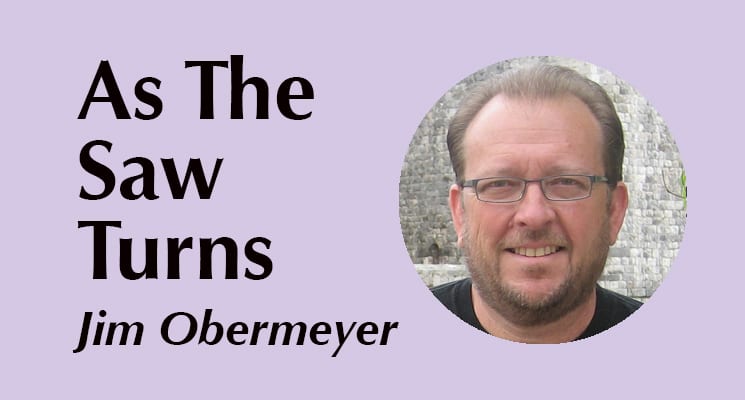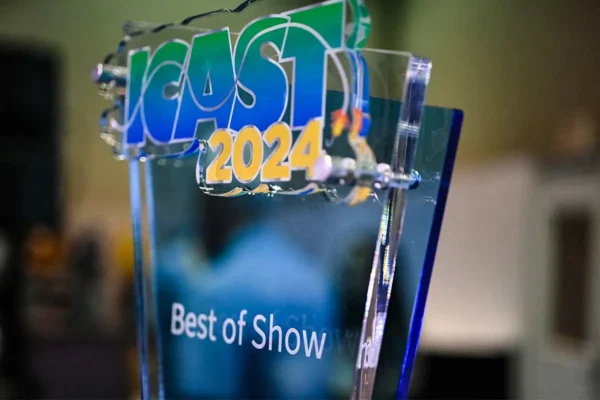by Jim Obermeyer
I was asked a while back by a young friend to answer that question. Who have I looked up to as a “Big?” In other words, who mentored and inspired me in the early stages of my career? As I tripped back in time, I came upon several people that have taught me some of life’s lessons (or at least some of this industry’s important lessons). What’s also interesting is what I found that “qualified” this group to be on my most influential list. Some of these were not major life lessons, but small tweaks that later in life have made a big difference. As I share some of my “Bigs,” I would encourage you to take a few minutes and think about who has been important in your career…
Myron Levy was my first boss in the trade show industry. I was one year out of college, working for a large marketing department at a huge defense contractor. Myron, two other trade show coordinators and I made up his department. Myron was on the other end of his career…three years from retirement. He taught me many things, but what I remember most was his steadfast trust in his people, and his unwavering support for us. He would go to bat for us against the biggest political guns in the company. (And in a huge defense contractor, there were a lot of big guns) He taught me to find good people, and then support them with everything you have. They will perform for you.
Karl Maxson was one of those guys who always seemed to be on the verge of his next big opportunity. He was a fellow trade show manager, but he was really an entrepreneur in the making. Some of the “businesses” he had while I knew him: selling fortune cookies mail order through Rolling Stone magazine and selling marble Corvette coasters to the Corvette Clubs of America. He enjoyed the creative process, the brainstorming, the “what ifs.” And that’s what I learned from him…stretch creatively, don’t be afraid to try something new. Ask “What if…”
My relationship with Dick Rothfuss, the director of marketing at this company, was not always a good one. He could be a very difficult man to work for. Our philosophies on trade shows, on business, and on life didn’t usually align. But every time we got together to talk about the next show we were doing, he would ask me the same three questions: (1) What’s our message? (2) What’s the mode of delivery? (3) How do we know our message was delivered? We always came away from those meetings with our objectives defined (the message), what type of product demo/presentation we were going to do (the mode of delivery) and how we were going to measure success (was our message delivered?). I still ask those questions of our people and of my clients today.
By the time I met Fred Kitzing in 1986, I had been doing trade shows for about five years. I thought I was pretty smart. I was about to be proven wrong. I vividly remember our first meeting. I was visiting his company in Chicago because we were planning to buy a new exhibit, and his firm was in the running. As soon as I sat down across the table from him he started firing questions at me. “Why did my company attend trade shows?” “How did we interact with the audience?” “What were our quantifiable objectives?” “How would we measure those objectives?” “What did a successful show look like for us?” And on and on. There were questions about our product, our company, our marketing direction, where trade shows fit in, and what trade shows meant to us.
And as I talked, he sketched. He didn’t take notes. He sketched. On a pad of velum. And he kept asking questions, and I kept stumbling through answers, and he kept sketching. And this went on for several hours, just him and me. When it was over, I felt like an accused criminal coming out of the interrogation room. But my God, the design that developed from that conversation! It was by far the best design proposal we received for that program.
That first conversation grew into a long relationship with Fred that lasted until after he closed his company. After a while, I actually looked forward to those “interrogations,” because he challenged me to have the answers to his questions. He made me smarter about my company and my trade show marketing program. And he turned me from a trade show coordinator into a trade show marketer.
The sad thing is that none of these men are alive today to thank for their contributions to my life and my career. I could go on, there have been so many more that have had their imprint on my life, but you get the idea. As we go through life we pick up bits and pieces from many people. The reality is that our industry is full of mentors; those from whom we can learn and pattern ourselves after. The key I think is to get involved in the industry, get out and be a part of it. Learn from your peers. This industry can be a lot of work, but it can also be a lot of fun.
And when you figure out who your “Bigs” are, thank them while you can. And remember while you are out there, you may be on somebody’s “Big” list, too.
See you on the show floor.
Jim Obermeyer has been in the tradeshow industry 35 years, both as a corporate trade show manager and exhibit house owner. He is currently a vice president at Hamilton Exhibits and can be reached at jobermeyer@hamilton-exhibits.com.






























